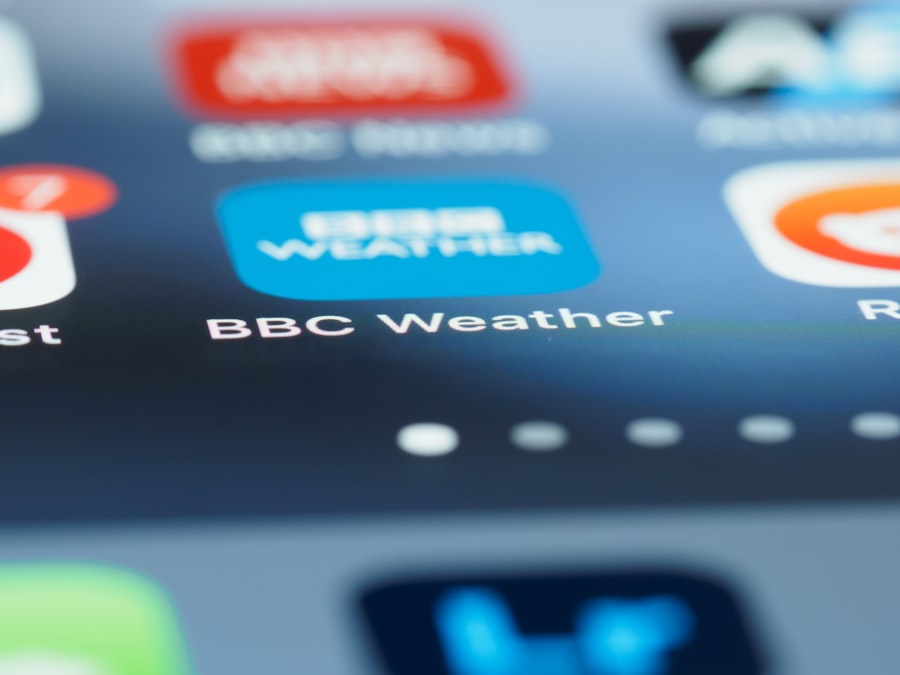As you navigate through your daily life, you may not immediately consider how the weather can influence your health, particularly your blood sugar levels. For those managing diabetes or prediabetes, understanding the relationship between weather conditions and blood sugar is crucial. Weather can affect your body in various ways, from how you feel physically to how your body processes glucose.
This article will explore the multifaceted ways in which different weather elements can impact your blood sugar levels, providing insights that may help you better manage your condition. The interplay between weather and blood sugar is complex and often overlooked. While you might focus on diet and exercise as primary factors in blood sugar management, external conditions can also play a significant role.
Temperature fluctuations, humidity levels, barometric pressure changes, and even air quality can all contribute to variations in your blood glucose readings. By understanding these influences, you can take proactive steps to maintain stable blood sugar levels, regardless of the weather outside.
The Impact of Temperature on Blood Sugar
Temperature is one of the most noticeable weather factors that can affect your blood sugar levels. When the temperature rises, your body may become more insulin-sensitive, which means that your cells are better able to utilize insulin to absorb glucose from the bloodstream. This can lead to lower blood sugar levels, which might be beneficial for some individuals.
However, extreme heat can also lead to dehydration, which can cause blood sugar levels to spike unexpectedly. As you sweat and lose fluids, your body may struggle to maintain proper glucose regulation. Conversely, cold temperatures can have a different effect on your blood sugar management.
When exposed to cold weather, your body may require more energy to maintain its core temperature. This increased energy demand can lead to higher blood sugar levels as your body releases stored glucose for fuel. Additionally, if you find yourself less active during colder months, this sedentary behavior can further exacerbate fluctuations in your blood sugar levels.
Understanding how temperature affects your body can help you make informed decisions about your health during different seasons.
The Influence of Humidity on Blood Sugar

Humidity is another weather factor that can significantly impact your blood sugar levels. High humidity can make you feel sluggish and uncomfortable, which may lead to decreased physical activity. When you are less active, your body may not utilize insulin as effectively, potentially resulting in elevated blood sugar levels.
Moreover, high humidity can exacerbate feelings of fatigue and lethargy, making it even more challenging to stay active and engaged in healthy behaviors. On the other hand, low humidity can lead to dehydration, which is a known factor that can cause blood sugar spikes. When your body is dehydrated, it may not be able to process glucose efficiently, leading to higher readings on your glucose monitor.
Additionally, dry air can irritate your respiratory system and skin, causing discomfort that may distract you from managing your diabetes effectively. By paying attention to humidity levels and adjusting your activities accordingly, you can better manage your blood sugar throughout the year.
The Effect of Barometric Pressure on Blood Sugar
Barometric pressure is a less commonly discussed weather element but can still have an impact on your blood sugar levels. Changes in barometric pressure often accompany shifts in weather patterns, such as storms or changes in temperature. Some studies suggest that fluctuations in barometric pressure may influence insulin sensitivity and glucose metabolism.
For instance, when a storm approaches and barometric pressure drops, you might experience changes in how your body responds to insulin. Additionally, changes in barometric pressure can affect your mood and energy levels. If you find yourself feeling more fatigued or irritable during periods of low pressure, this could lead to poor dietary choices or decreased motivation to exercise—both of which can negatively impact your blood sugar management.
By being aware of how barometric pressure affects you personally, you can take steps to mitigate its effects on your health.
How Wind and Air Quality Affect Blood Sugar
Wind and air quality are often overlooked factors that can influence your blood sugar levels. Windy conditions can make outdoor activities less enjoyable and more challenging, potentially leading to decreased physical activity. If you find it difficult to exercise outside due to strong winds or poor air quality, this could result in higher blood sugar levels over time.
Staying active is essential for managing diabetes effectively; therefore, finding alternative indoor activities during inclement weather is crucial. Air quality is another important consideration when it comes to managing blood sugar levels. Poor air quality—often characterized by high levels of pollution or allergens—can lead to increased stress on the body.
When you are exposed to pollutants or allergens, your body may respond with inflammation, which can interfere with insulin sensitivity and glucose metabolism. This means that if you live in an area with frequent air quality issues, it’s essential to monitor how these conditions affect your overall health and blood sugar management.
Seasonal Changes and Blood Sugar Levels

As the seasons change, so too do the challenges associated with managing blood sugar levels. In the spring and summer months, longer days and warmer temperatures often encourage outdoor activities and increased physical exercise. However, these seasons also bring challenges such as heat-related dehydration and potential changes in appetite due to seasonal foods.
You might find yourself craving lighter meals or fresh fruits and vegetables; while these choices are generally healthy, they can also lead to fluctuations in blood sugar if not balanced properly. In contrast, fall and winter months often bring colder temperatures and shorter days that may lead to decreased physical activity. The holiday season can also introduce a variety of high-calorie foods that may tempt you away from your usual dietary habits.
It’s essential to remain vigilant during these months by planning meals ahead of time and finding ways to stay active indoors when outdoor conditions are less favorable. By recognizing how seasonal changes affect your lifestyle choices, you can better prepare for potential challenges in managing your blood sugar.
Tips for Managing Blood Sugar in Different Weather Conditions
To effectively manage your blood sugar levels throughout varying weather conditions, consider implementing a few practical strategies tailored to each season or climate scenario. First and foremost, always stay hydrated—regardless of whether it’s hot or cold outside. Keeping yourself well-hydrated helps maintain optimal bodily functions and supports effective glucose metabolism.
When temperatures rise, try to engage in physical activities during cooler parts of the day—such as early morning or late evening—to avoid overheating and dehydration. Conversely, during colder months, consider indoor workouts or activities that keep you moving while staying warm. Additionally, monitor your blood sugar levels more frequently during extreme weather conditions; this will help you identify patterns related to temperature changes and adjust your management strategies accordingly.
Conclusion and Summary of Weather’s Impact on Blood Sugar
In conclusion, the relationship between weather conditions and blood sugar levels is intricate and multifaceted. From temperature fluctuations to humidity changes and seasonal variations, each element plays a role in how effectively you manage your diabetes or prediabetes. By understanding these influences, you empower yourself with knowledge that can help you make informed decisions about your health.
As you navigate through different weather conditions throughout the year, remember that proactive management is key. Stay hydrated, adjust your physical activity based on external conditions, and monitor your blood sugar levels regularly to identify any patterns related to weather changes. By taking these steps, you can maintain better control over your blood sugar levels and enhance your overall well-being—regardless of what Mother Nature has in store for you.
